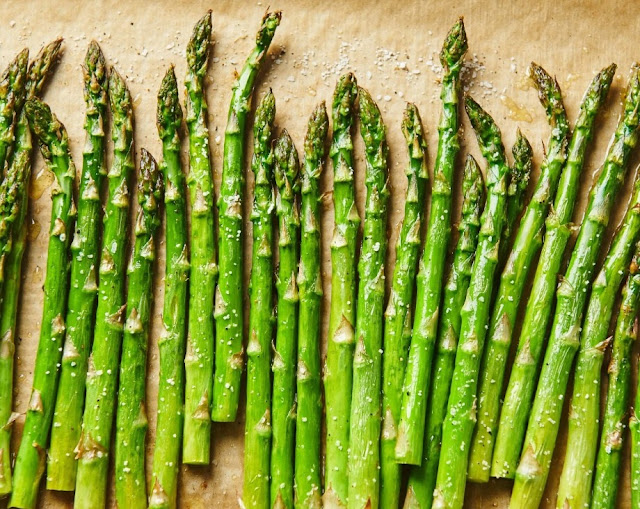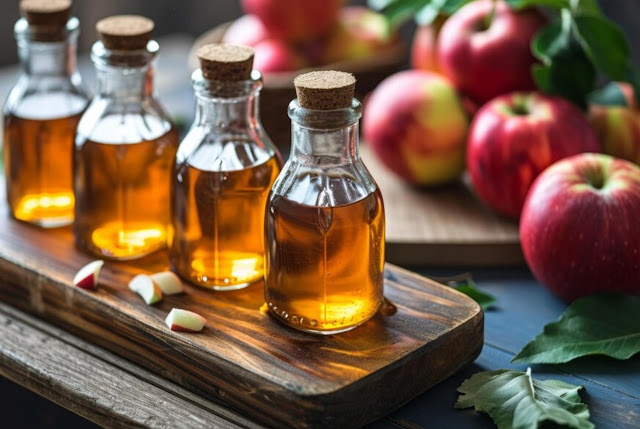Asparagus: Benefits, Processing, Cooking, Storing - Tips
Buying, cooking and frying asparagus: tips and recipes
Hardly any other vegetable is as popular as asparagus in
Germany. During the short season it is available in a wide range of colors,
varieties and commercial qualities. Tips for preparation and recipes.
Harvest time largely determines whether the asparagus appears green, white, or slightly purple. White asparagus, especially mild tasting, is very mild because it grows on earthen walls underground, protected from sunlight. It is stung as soon as the earth's surface rises slightly and before it is exposed to sunlight. Connoisseurs of purple asparagus appreciate it for its subtle, slightly strong taste. He was stung when he penetrated the surface of the earth.
Green asparagus grows without soil walls and is mostly above ground. Sunlight causes the plant to begin photosynthesis and the asparagus turns green. The spears are thinner and have a stronger flavor than white asparagus.
How to recognize fresh asparagus?
Consumers can recognize fresh asparagus by its closed ends. The stem should look plump, shiny, and sturdy. The asparagus tips should not be dry, brownish or pitted. Juice will come out when you press gently with your thumb. Since some retailers store asparagus in water, the damp cut surface can also promote freshness. In this case, the following trick helps: rubbing the stems against each other. If the asparagus squeaks slightly, the product is fresh.
It is recommended to buy asparagus that comes from the
region; usually fresher than goods sent from far away. At many weekly markets
and roadside stands, asparagus farmers sell their harvest, picked fresh in the
morning or the day before. Another advantage: asparagus does not have to be
transported long distances.
What should you consider when buying asparagus?
Asparagus is available from us in three different commercial grades: E (Extra), I and II The grades say nothing about taste and quality, but simply divide the vegetable according to the thickness and growth of each stalk and whether the head is still present. tightly closed or slightly open. The straighter and thicker the bar, the higher the commercial grade and price. Anyone who cuts or purees vegetables during preparation, for example to make soup, can also purchase second or third class goods. The same requirements generally apply to green asparagus, although the stems may be thinner.
How long is asparagus season and why is it so expensive?
Asparagus season is short: depending on the region, it begins as early as mid-March and usually ends on June 24, St. Patrick's Day. The plant then needs to grow without interruption to gather strength for next year.
Cutting asparagus is done by hand. The machine can't dig into the stem carefully enough - nor can it predict where it needs to be pierced. Only humans can do that.
Storing asparagus: Here's how to keep it fresh
Wrapped in a damp cloth, unpeeled asparagus will keep in the vegetable compartment of the refrigerator for two to three days. Green asparagus is best stored in water. Vegetables can also be easily frozen: it is best to pack washed and peeled asparagus in portions in freezer bags or cans. After six to eight months at the latest, it must be cooked without thawing in boiling water and consumed. Asparagus is one of the low-nitrate vegetables and can therefore be reheated after cooking.
What should you pay attention to when peeling asparagus?
Always peel asparagus from top to bottom, leaving the heads
on. To do this, use a special asparagus peeler or a simple peeler. Trim the
ends. The asparagus tips and skins do not need to be removed; You can use it to
make aromatic asparagus soup. Often you don't even need to peel the green
asparagus. If you're not sure, just try a piece after cutting off the tip and
test whether the stick is tender enough. If not, just peel it thinly on the
bottom third.
How long to cook white and green asparagus?
Depending on the thickness, the white or purple stems are
boiled in water with a little salt, sugar and butter for 10 to 20 minutes. A
little lemon juice ensures the asparagus stays nice and white.
Green asparagus takes less time. Asparagus generally should not be served completely soft, but rather "al dente" like pasta. The fork test shows when the asparagus is done: simply place the spears on the fork. If it bends easily without hanging, the asparagus is optimal. Alternatively, you can test for doneness with the tip of a knife while cooking.
Prepare the asparagus slowly by steaming
Because asparagus has a high water content, the intensity of its flavor is lost when cooked in salted water. If prepared carefully, such as steam cooking, more vitamins and trace elements are retained. Asparagus can be steamed in a saucepan with a steamer insert or in a special steamer.
An alternative is to prepare it in the oven. Sprinkled with a little sea salt and flakes of butter and wrapped in parchment, the peeled steaks are placed in the oven at 180 degrees for 30 to 45 minutes, depending on the thickness. Asparagus can also be fried or enjoyed raw.
If the asparagus tastes bitter, it may have been cut too
close to the rootstock. Then you just cut off the bitter part to taste.
Side dishes: What goes well with asparagus?
In addition to new potatoes, classic side dishes for asparagus include raw or cooked ham, in Northern Germany Katenschinken. If you like it very tender, serve steamed salmon, char or veal schnitzel with it. Melted butter or hollandaise sauce are suitable as dips. Scrambled eggs are great for vegetarians, tofu as a side dish for vegans, and smoked tofu is especially delicious.
What wines pair well with asparagus?
Because asparagus tastes quite bitter, fruit wines with strong acidity are not an appropriate accompaniment. Instead, you should choose grape varieties with subtle aromas such as Silvaner, Pinot Blanc, Rivaner or Müller-Thurgau. Riesling from the Palatinate, Pinot Gris or Chardonnay harmonizes with the stronger green asparagus. If a thick sauce such as hollandaise sauce or chopped egg is served with asparagus, the wine should be more sparkling, such as a Riesling from the Moselle. Silvaner or semi-dry Riesling pairs well with the vinegar notes in asparagus salad.
Is asparagus healthy?
Asparagus is not only delicious, but also very healthy.
Contains important minerals such as potassium, calcium, iron, magnesium, copper
and phosphorus as well as vitamins C, E and B. At the same time - pure and
without rich sauces and side dishes - it is a real slimming agent: 100 grams of
asparagus only has 16 kilocalories.



